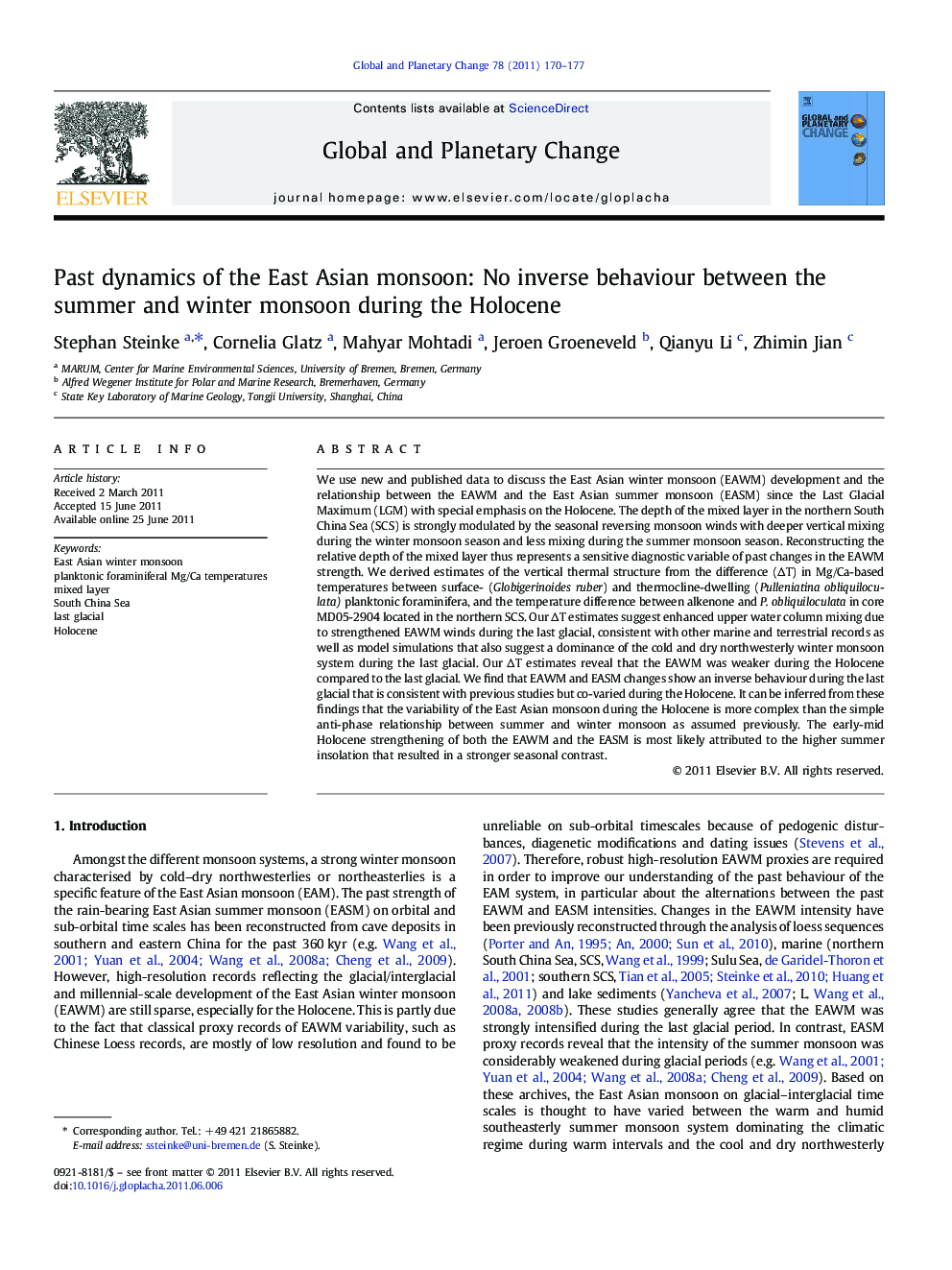| Article ID | Journal | Published Year | Pages | File Type |
|---|---|---|---|---|
| 4463831 | Global and Planetary Change | 2011 | 8 Pages |
We use new and published data to discuss the East Asian winter monsoon (EAWM) development and the relationship between the EAWM and the East Asian summer monsoon (EASM) since the Last Glacial Maximum (LGM) with special emphasis on the Holocene. The depth of the mixed layer in the northern South China Sea (SCS) is strongly modulated by the seasonal reversing monsoon winds with deeper vertical mixing during the winter monsoon season and less mixing during the summer monsoon season. Reconstructing the relative depth of the mixed layer thus represents a sensitive diagnostic variable of past changes in the EAWM strength. We derived estimates of the vertical thermal structure from the difference (∆T) in Mg/Ca-based temperatures between surface- (Globigerinoides ruber) and thermocline-dwelling (Pulleniatina obliquiloculata) planktonic foraminifera, and the temperature difference between alkenone and P. obliquiloculata in core MD05-2904 located in the northern SCS. Our ∆T estimates suggest enhanced upper water column mixing due to strengthened EAWM winds during the last glacial, consistent with other marine and terrestrial records as well as model simulations that also suggest a dominance of the cold and dry northwesterly winter monsoon system during the last glacial. Our ∆T estimates reveal that the EAWM was weaker during the Holocene compared to the last glacial. We find that EAWM and EASM changes show an inverse behaviour during the last glacial that is consistent with previous studies but co-varied during the Holocene. It can be inferred from these findings that the variability of the East Asian monsoon during the Holocene is more complex than the simple anti-phase relationship between summer and winter monsoon as assumed previously. The early-mid Holocene strengthening of both the EAWM and the EASM is most likely attributed to the higher summer insolation that resulted in a stronger seasonal contrast.
Research highlights► Proxy records for changes in the East Asian winter monsoon. ► We provide estimates of the upper ocean thermal structure to investigate winter monsoon changes. ► Anti-phase relationship between the summer and winter monsoon during the last glacial. ► The winter and summer monsoon sub-systems co-varied during the Holocene.
